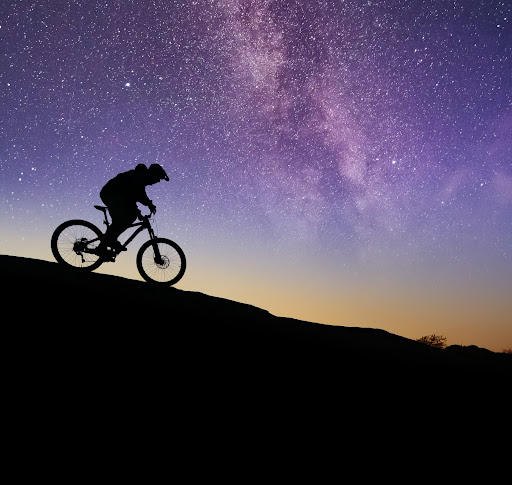As an avid cyclist who’s logged countless hours on both urban streets and remote trails after sunset, I can’t emphasise enough how exhilarating – yet challenging – night riding can be. The unique atmosphere of riding under the stars, combined with the peaceful solitude of empty roads and trails, creates an unforgettable cycling experience. Today, I’ll share my comprehensive guide to staying safe while enjoying the distinctive adventure of cycling after dark.
Essential Equipment
When it comes to night riding equipment, proper lighting is absolutely crucial. You’ll need a powerful front light of at least 500 lumens and a bright red rear light with multiple modes. I personally recommend investing in a secondary set of lights as a backup. Modern LED technologies have made powerful lights more affordable and longer-lasting than ever before. Equally important is your visibility gear – invest in clothing with reflective strips or add reflective tape to your bike frame, and always wear a reflective vest. Consider adding spoke reflectors and pedal reflectors for additional visibility from the sides. Don’t forget to carry backup lights or batteries, as being caught without illumination can be dangerous and potentially illegal.
Safety Tips
Safety begins with proper route planning. Start by riding familiar paths and scout your intended routes during daylight hours to identify potential hazards such as potholes, rough pavement, or poorly lit sections. When riding at night, defensive cycling becomes even more critical – always assume drivers haven’t seen you, make eye contact whenever possible, and clearly signal your intentions well in advance of any turns or stops. It’s essential to maintain a moderate speed that allows you to react quickly to unexpected obstacles, as your visibility will be significantly reduced. Remember that depth perception can be challenging in low-light conditions, so leave extra space between yourself and potential hazards.
Best Practices
Before heading out for a night ride, thoroughly inspect your bike – mechanical issues are much more challenging to address in the dark. Pay special attention to tyre pressure and brake performance, as these become even more critical during night riding. Consider joining local night riding groups, as group riding not only enhances safety but also adds a social element to your cycling experience. Many cycling clubs organise regular night rides with experienced leaders who know the safest routes. Always check weather forecasts and adjust your gear accordingly, paying special attention to wet conditions which require extra caution. Moisture on your glasses or bike lights can significantly impact visibility, so consider using anti-fog treatments.
Common Mistakes to Avoid
Despite the temptation to wear sleek black cycling gear, dark clothing is practically invisible at night. Instead, opt for bright or reflective gear that makes you visible to others. Many brands now offer stylish clothing with integrated reflective elements that look normal during the day but shine brightly under headlights. Don’t forget eye protection – clear or yellow-tinted glasses are essential for protecting against insects and debris, and they can also help reduce glare from oncoming vehicles. Finally, remember that even experienced riders need to exercise additional caution during night rides – overconfidence can lead to dangerous situations. Never assume that because you know a route well during the day, it will be equally manageable at night.
Remember, night riding can be an incredible experience when done safely. The peaceful atmosphere and cooler temperatures make it a fantastic alternative to daytime cycling. The reduced traffic and unique ambience can make familiar routes feel like completely new adventures. Just ensure you’re properly equipped and always stay alert.
In my years of night riding, I’ve found that some of my most memorable cycling experiences have happened after sunset. There’s something magical about riding under a star-filled sky or through city streets illuminated by streetlights. With the right preparation and mindset, night riding can open up a whole new dimension to your cycling journey.
Written by Niall O’Riordan UBS
